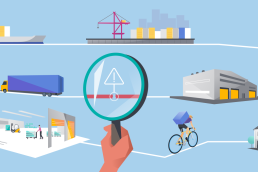Location intelligence isn’t just a concern for logistics and transportation companies. There are numerous ways in which marketers can benefit too.
In this respect, location intelligence has two primary uses – the ability to segment data and attract and engage both new and existing customers.
Let’s take a closer look at how companies can turn possibility into profitability.
Data-Driven Insights
In a nutshell, location intelligence can be used to gain granular insights into anonymised data. By using location criteria in conjunction with a whole host of other information, marketers can get a more accurate picture of their customers.
For example, in a similar way to how restaurant and retail chains use location intelligence in site selection – to find locations for new stores – marketers can use their customer data to better predict future sales and churn, which enables them to deploy the right amount of marketing spend in a certain area.
Supermarket loyalty schemes are particularly good at leveraging data in this way – and profile different demographics in certain areas to tailor their local sales and marketing efforts for maximum impact.
Data visualisation is another core location intelligence solution that marketers can use.
Information can be aligned with CRM systems – such as SalesForce or analytical tools like Power BI – enabling users get a clear picture of where their target markets are based, and where they need to concentrate their efforts.
Real-Time Responses
Marketers must be able to identify and understand their most profitable customers to maximise market planning, media strategy, customer acquisition, cross-selling, and retention marketing. Then they can then work towards creating offers and campaigns that will appeal to their target market and deploy them in the areas where they’re based – in a way that will resonate with them.
For example, say a multinational food company with a portfolio of international brands wanted to target older shoppers in a specific cultural or linguistic demographic – such as Hispanic consumers in the eastern US. In addition to finding out where they are, and which stores they shop in, brands can use local advertising to target a range of postal codes, cities, regions or even specific addresses with precision
However, if a sneaker brand was looking to target younger consumers in another part of the world, the approach taken would be very different, and would rely much more heavily on digital and mobile marketing – such as geofencing, SMS alerts, and Mobile Trace Data.
While all of these efforts are very different, what unites them is the ability to reach the right people, at the right time, in the right place. It’s not just a question of ‘who’ and ‘when’ – ‘where’ matters just as much to the success of hyperlocal marketing campaigns like these.
All things considered, more precise targeting is better for everyone. Not only does it enable companies to deploy ads in a more cost-effective way across numerous channels – customers also get better rewards; well-timed offers; more useful advice; and personalised content based on their habits, wants, and needs.
Ultimately, collating location data and identify the right targets means brands can deliver the right messages to the right channels and provide better personalisation – which can improve conversions significantly: by up to 30% according to research. By understanding a person’s current location, we can understand a moment. But with movement data from millions of smartphones, we can understand lives.
This is shared value in action – something that’ll almost certainly result in an improved customer experience which will continue to be extremely important moving forward as consumers look for better experiences from brands.



